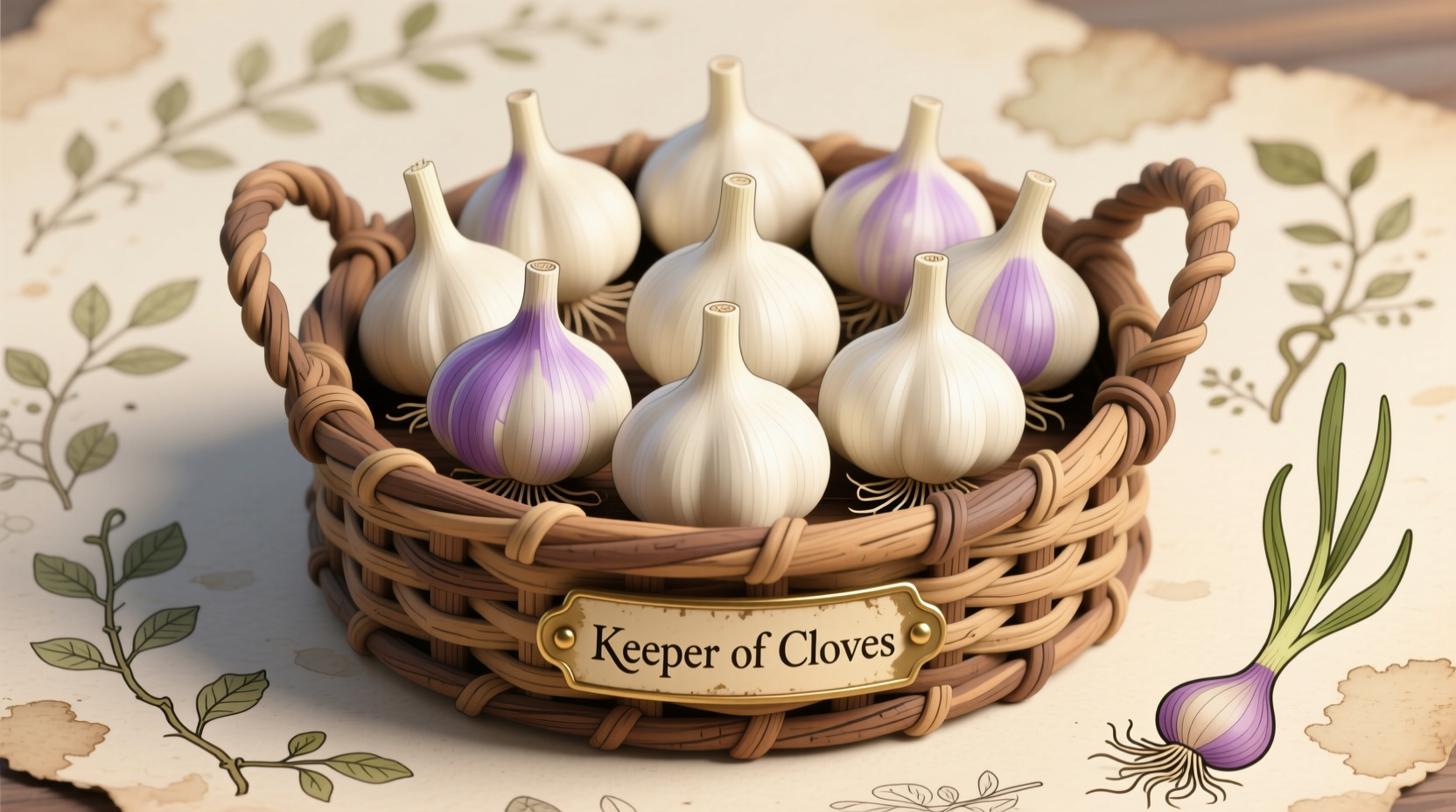Imagine opening your pantry in February and still finding garlic that's firm, flavorful, and ready to transform your dishes—no sprouting, no mold, just perfect culinary potential. That's the reality keeper garlic delivers, solving the seasonal limitation that plagues most home cooks and professional chefs alike.
Unlike the softneck garlic dominating supermarket shelves (which often deteriorates after 3-5 months), keeper garlic's unique biological characteristics make it the storage champion of the allium world. In this comprehensive guide, you'll discover exactly why this heirloom variety deserves a permanent spot in your kitchen and garden.
What Makes Keeper Garlic Different From Ordinary Garlic?
Keeper garlic (Allium sativum var. ophioscorodon) belongs to the hardneck garlic family, which naturally possesses superior storage qualities compared to softneck varieties. The "keeper" designation specifically refers to cultivars bred for exceptional longevity without compromising flavor integrity.
Developed through selective breeding by garlic enthusiasts and agricultural researchers, keeper varieties maintain their cellular structure longer due to:
- Thicker protective skin layers around each clove
- Lower moisture content (approximately 58-62% compared to 65-70% in softnecks)
- Higher natural antioxidant compounds that slow enzymatic browning
- Optimal sugar-to-starch ratio that prevents premature sprouting
| Characteristic | Keeper Garlic | Standard Softneck | Silverskin Garlic |
|---|---|---|---|
| Storage Duration | 9-12 months | 3-5 months | 8-10 months |
| Clove Arrangement | Single circle | Multiple layers | Multiple layers |
| Flavor Profile | Robust, complex, less sharp | Milder, one-dimensional | Strong, pungent |
| Peeling Difficulty | Easy | Difficult | Very difficult |
| Cold Hardiness | Excellent (USDA 3-9) | Poor (USDA 7-9) | Moderate (USDA 5-9) |
The Science Behind Keeper Garlic's Superior Storage
According to research from the USDA Agricultural Research Service, keeper garlic varieties maintain cellular integrity through a combination of biochemical factors that delay the natural deterioration process. Their thicker bulb wrappers (typically 5-7 layers compared to 3-4 in softnecks) create a superior moisture barrier while still allowing necessary gas exchange.
The University of Minnesota Extension notes that keeper garlic's storage advantage becomes particularly evident in home environments. While commercial storage facilities can extend softneck garlic's shelf life through controlled atmosphere storage, keeper varieties maintain quality under typical pantry conditions where temperature and humidity fluctuate.

When Keeper Garlic Shines: Practical Applications
Keeper garlic isn't just about longevity—it delivers culinary advantages that make it worth seeking out:
For Home Cooks
- Consistent flavor year-round: Unlike supermarket garlic that often becomes bitter or develops off-flavors after months in storage, keeper garlic maintains its balanced profile
- Ease of preparation: The cloves separate easily from the central stalk and peel with minimal effort
- Reliable results: Professional chefs report more predictable flavor development when cooking with keeper varieties
For Gardeners
If you grow your own garlic, keeper varieties solve the "garlic gap" problem—the period between when last year's harvest runs out and the new crop is ready. The Rodale Institute's organic farming research shows keeper garlic maintains quality through winter and early spring when other home-stored garlic would have deteriorated.
Proper Storage Techniques for Maximum Longevity
To achieve the full 9-12 month storage potential, follow these evidence-based methods:
- Cure properly: After harvest, dry in a shaded, well-ventilated area for 3-4 weeks (ideal conditions: 75-80°F with 60-70% humidity)
- Trim carefully: Cut roots to 1/4 inch and stems to 1-2 inches after curing
- Store in optimal conditions: 55-65°F with 50-65% humidity (a basement or root cellar works perfectly)
- Avoid refrigeration: Cold temperatures trigger sprouting in garlic—counterintuitive but scientifically verified by Cornell University research
- Monitor regularly: Check monthly for any bulbs showing signs of deterioration
Important context boundary: Keeper garlic's storage advantage applies primarily to whole, unbroken bulbs. Once you separate cloves, they'll deteriorate at rates similar to other garlic varieties (about 7-10 days at room temperature).
Culinary Applications: Getting the Most From Keeper Garlic
Keeper garlic's balanced flavor profile makes it exceptionally versatile. Unlike some long-storage varieties that develop harsh notes, keeper maintains complexity through extended storage.
Professional chefs recommend using keeper garlic in these applications:
- Raw applications: Its milder initial bite works beautifully in salad dressings, aiolis, and fresh salsas
- Slow-cooked dishes: The flavor compounds transform elegantly in braises, stews, and roasts
- Garlic confit: Keeper's structural integrity holds up better than softnecks during the slow oil-poaching process
- Preservation: Ideal for making garlic-infused oils or vinegar due to its consistent quality
Growing Keeper Garlic: What Home Gardeners Should Know
For those interested in cultivation, keeper garlic varieties (like 'Music', 'German Extra Hardy', and 'Spanish Roja') thrive in colder climates but adapt well to most growing zones. The Old Farmer's Almanac notes these key growing considerations:
- Plant cloves in fall (4-6 weeks before first frost) for largest bulbs
- Requires 4-8 weeks of temperatures below 40°F to initiate proper bulb formation
- Produces edible scapes (flower stalks) in spring—remove these to direct energy to bulb development
- Harvest when bottom third of leaves turn brown (typically mid-summer)
Unlike softneck varieties that can be grown in warmer climates, keeper garlic's cold requirement makes it unsuitable for true tropical regions (USDA zones 10+).
How to Select Quality Keeper Garlic
When purchasing keeper garlic, look for these quality indicators:
- Firm bulbs with no soft spots or mold
- Intact, papery wrappers without tears
- No visible sprouting (small root nubs are normal)
- Heavy for their size (indicates high moisture content before curing)
- Distinct central stalk visible when cloves are separated
Avoid bulbs with yellowing wrappers or those that feel light and papery—these indicate over-drying or age. The National Onion Association confirms that proper curing is essential for achieving keeper garlic's legendary storage capabilities.











 浙公网安备
33010002000092号
浙公网安备
33010002000092号 浙B2-20120091-4
浙B2-20120091-4